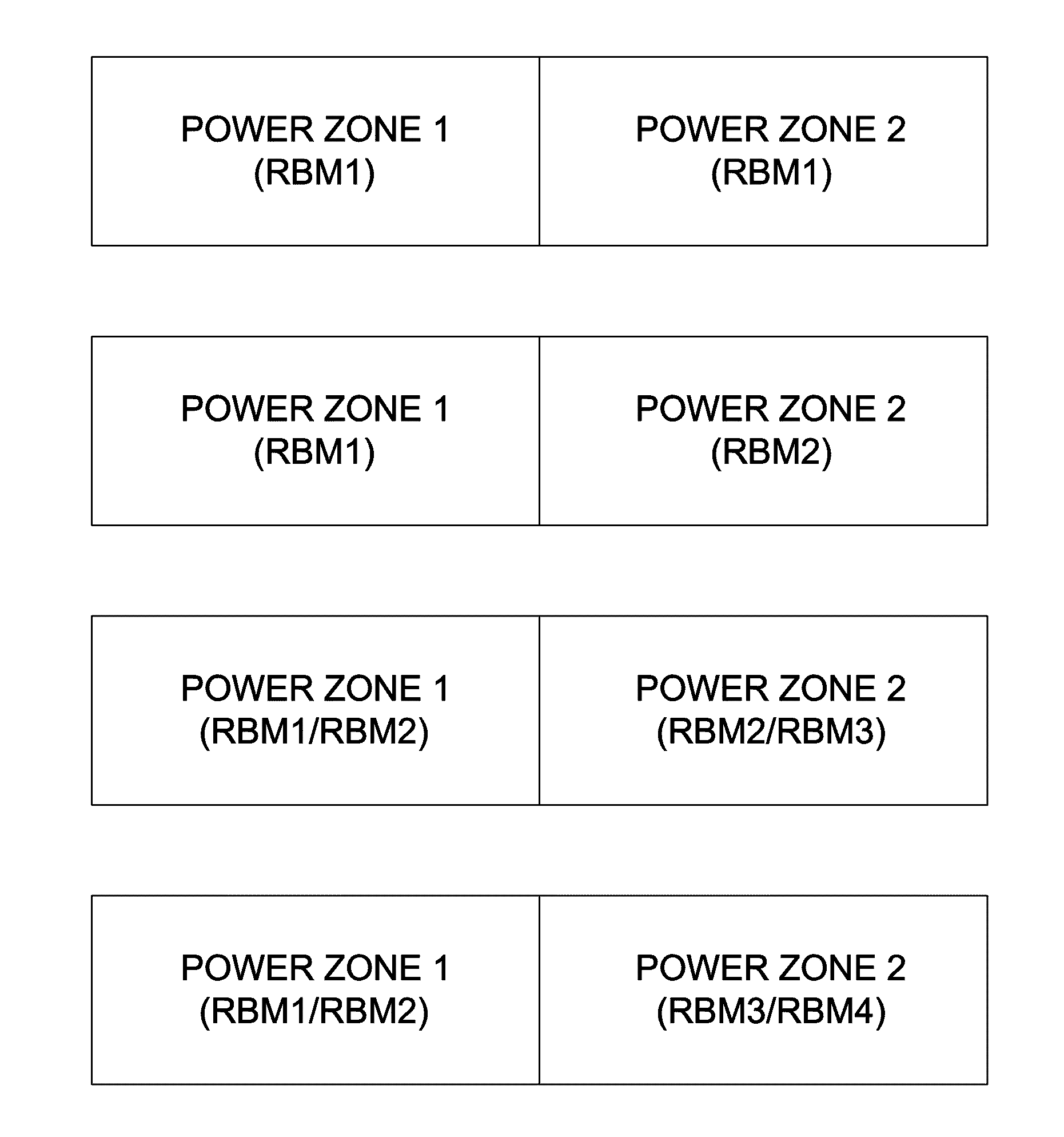Method and apparatus for performance management in wireless backhaul networks via power control
- Summary
- Abstract
- Description
- Claims
- Application Information
AI Technical Summary
Benefits of technology
Problems solved by technology
Method used
Image
Examples
Example
[0041]A method for performance management of a wireless backhaul network 100 using power management according to an embodiment of the present invention will be described with reference to FIG. 1A, which represents schematically the topology of a system comprising a point-to-multipoint wireless backhaul wireless network, comprising a plurality of fixed nodes. That is, the nodes comprise a plurality of hubs 102 and RBMs 104 arranged as clusters 120. In each cluster 120, a hub 102 serves a set of remote backhaul modules (RBMs) 104 through wireless links (radio links) 110. In this example the hubs 102 and RBMs 104 are arranged as 21 clusters, with each hub serving up to four Remote Backhaul Modules (RBMs). The network comprises a plurality of cells, each with three hubs 102 with sectorial antenna that are co-located at the cell center, with one cluster, i.e. 120-1, 120-2, 120-3 mapped to each of the three sectors of the cell. The frequency reuse factor of the system is 1.
[0042]As illust...
PUM
 Login to View More
Login to View More Abstract
Description
Claims
Application Information
 Login to View More
Login to View More - R&D
- Intellectual Property
- Life Sciences
- Materials
- Tech Scout
- Unparalleled Data Quality
- Higher Quality Content
- 60% Fewer Hallucinations
Browse by: Latest US Patents, China's latest patents, Technical Efficacy Thesaurus, Application Domain, Technology Topic, Popular Technical Reports.
© 2025 PatSnap. All rights reserved.Legal|Privacy policy|Modern Slavery Act Transparency Statement|Sitemap|About US| Contact US: help@patsnap.com



